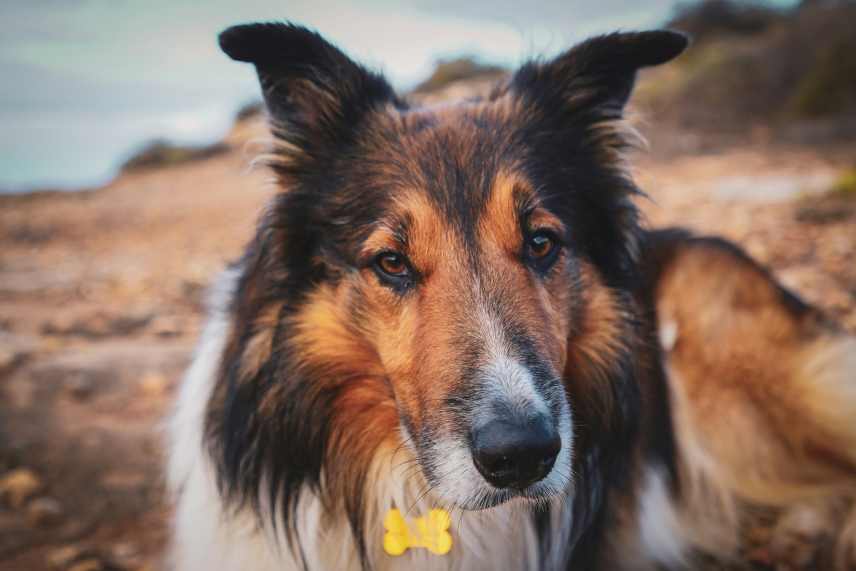Introduction: How to Train a Dog to Be Calm
Training a dog to be calm is essential for both their well-being and the harmony of your household. Whether your dog is naturally high-energy or prone to anxiety, implementing effective training techniques can help foster a sense of calmness and relaxation.
This article will explore proven strategies and methods to teach your dog to be calm in various situations.
Understanding the Importance of Calmness:
Before diving into the methods of how to train a dog to be calm, it’s crucial to understand why teaching calm behavior is beneficial for your dog:
– Calm dogs are less likely to exhibit destructive behaviors such as excessive barking, chewing, or digging.
– A calm demeanor reduces stress and anxiety in dogs, promoting overall mental and emotional well-being.
– Calm dogs are more enjoyable to be around and can strengthen the bond between owner and pet.

Creating a Calm Environment:
To set the stage for successful training, create a calm environment for your dog:
– Provide a comfortable and quiet space where your dog can relax and unwind.
– Minimize exposure to loud noises, chaotic environments, and stressful stimuli.
– Establish a consistent daily routine to help your dog feel secure and relaxed.
Exercise and Mental Stimulation:
Regular exercise and mental stimulation are essential for maintaining a calm demeanor in dogs:
– Engage in daily walks, runs, or play sessions to release excess energy and promote relaxation.
– Incorporate interactive toys, puzzle feeders, and training games to challenge your dog’s mind and prevent boredom.
– Consider enrolling your dog in activities like agility training or scent work to provide both physical and mental stimulation.
Positive Reinforcement Training:
Positive reinforcement training techniques can be highly effective in teaching a dog how to be calm:
– Reward your dog with treats, praise, and affection for displaying calm behavior, such as lying quietly or sitting calmly.
– Use a marker word or clicker to consistently signal desired behaviors and reinforce them.
– Break training sessions into short, frequent intervals to keep your dog engaged and motivated.
Desensitization and Counterconditioning:
For dogs prone to anxiety or fear-based behaviors, desensitization and counterconditioning can help promote calmness:
– Gradually expose your dog to triggering stimuli or situations at a low intensity, rewarding calm behavior throughout the process.
– Pair the presence of the trigger with positive experiences, such as treats, to change your dog’s emotional response over time.
– Seek professional guidance from a certified dog trainer or behaviorist for personalized desensitization protocols tailored to your dog’s specific needs.
Management and Prevention:
In addition to training, proactive management can help prevent overexcitement or anxiety-triggering situations:
– Use calming aids such as pheromone diffusers, calming sprays, or weighted blankets to help reduce stress in anxious dogs.
– Utilize management tools like baby gates, crates, or calming vests to create safe spaces and prevent unwanted behaviors.
– Avoid reinforcing hyperactive or anxious behavior by ignoring attention-seeking actions and redirecting focus to calm alternatives.
Consistency and Patience:
Training a dog to be calm requires patience, consistency, and a positive attitude:
– Be patient with your dog’s progress and celebrate small victories along the way.
– Consistently reinforce calm behavior in various environments and situations to generalize training.
– Stay calm and composed yourself, as dogs are highly attuned to their owner’s emotions and energy levels.
Conclusion: How to Train a Dog to Be Calm
Learning how to train a dog to be calm is a rewarding journey that requires dedication and commitment from both owner and pet. By implementing the strategies and techniques outlined in this article, you can help your dog develop the skills necessary to navigate the world with confidence and tranquility. Remember to prioritize positive reinforcement, patience, and consistency in your training efforts, and enjoy the journey of fostering a calm and well-behaved canine companion.
Introducing the Doggy Dan Online Dog Trainer Dog Calming Code
Introducing the Doggy Dan Online Dog Trainer Dog Calming Code:
- Revolutionary Approach: A groundbreaking program designed to transform your dog’s behavior by leveraging the natural principles of calm and leadership.
- Created by Doggy Dan: Developed by the renowned dog trainer, this comprehensive online course equips you with effective tools and techniques.
- Key Benefits:
- Establish a strong, respectful relationship with your dog.
- Address common behavioral issues such as excessive barking, aggression, and anxiety.
- Train your dog to be more serene and responsive.
- Step-by-Step Guide: Offers a detailed, easy-to-follow approach, making it perfect for any dog owner, regardless of their experience level.
- Complements Your Training Goals: Ideal for those looking to integrate calmness into their training regimen, perfectly complementing your blog post on “How to Train a Dog to Be Calm.”
- Proven Results: Join countless other satisfied dog owners who have witnessed remarkable transformations in their pets.
Take the First Step: Embrace a harmonious, stress-free relationship with your dog by diving into the Dog Calming Code. Begin your journey towards a more peaceful and joyful dog-owning experience today.
This online course by Doggy Dan is, in my opinion, one of the easiest and simplest ways to learn how to train a dog to be calm. All in the comfort of your own home!
Recent Posts
Summer Safety Guide for Dog Owners: Keeping Your Canine Companion Cool and Comfortable
Summer brings warmth and sunshine, inviting humans and their canine companions to enjoy the outdoors. However, the rise in temperature also increases the risks of overheating and heat-related...
The Importance of Heat Safety for Dogs: Understanding Heatstroke and How to Prevent It
Heatstroke is a serious condition that can occur in dogs when their body temperature becomes dangerously high, typically as a result of prolonged exposure to high temperatures or excessive physical...

